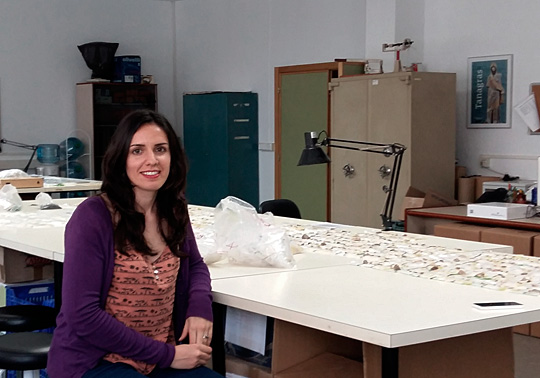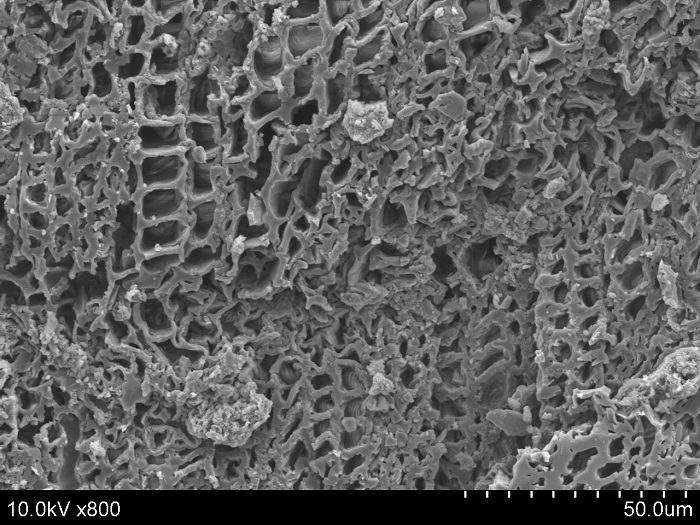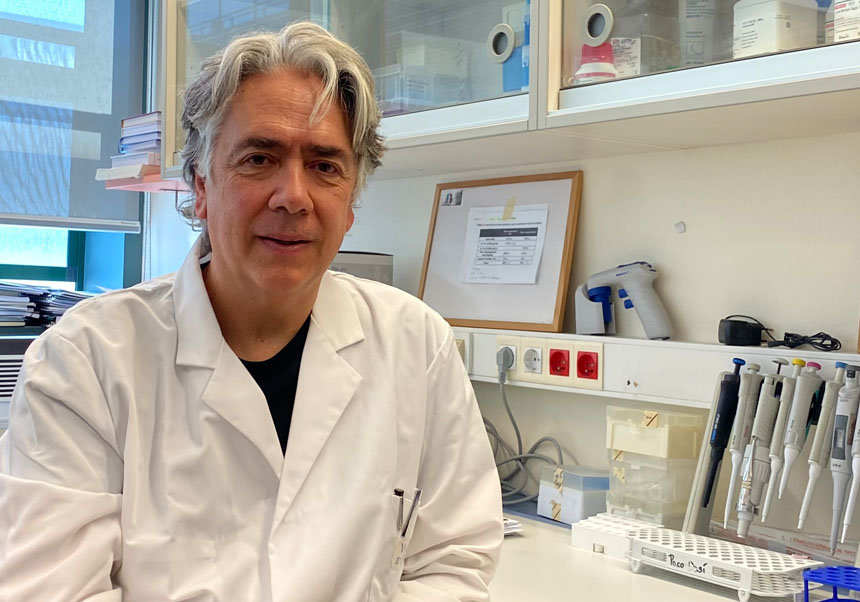The analysis of carbonised wood of two Valencian coats confirms that Neanderthals selected the fuel to produce smoke
- May 10th, 2017

Researchers of the Universitat de València and the Centre National de la Recherche Scientifique of France have stated through the analysis of wood residues preserved in two Valencian fields that Neanderthals selected the fuel to ignite fire and produce smoke. In this study published in the ‘Journal of Archaeological Science’, anatomic alterations produced by fungus in the wood of bonfires have been analysed.
Results of this research about wood remains in the fields of Abric del Pastor and El Salt (Alcoy) are the first archaeological evidence of the existence of bonfires with the aim to produce smoke in the context of the East of the Iberian Peninsula during the Middle Palaeolithic 50,000 years ago. In addition, this study states that Neanderthals had the same knowledge as the Homo sapiens had about combustible characteristics of the wood in the nature in different states: green wood, deadwood, degraded by fungus or rotten.
Paloma Vidal Matutano from the Research Group PREMEDOC and the Department of Prehistory, Archaeology and Ancient History of the Universitat de València; and Auréade Henry and Isabelle Théry-Parisot, of the Côte-d’Azur University and the Centre National de la Recherche Scientifique of France, highlight that this biodegraded wood selection could have a relation with the functionalities of bonfires associated to smoke production. We talk about the smoking of meat or fish, fur treatment or repellent against mosquitos.
Paloma Vidal explains that, regarding to the methodology, this is the first quantitative analysis of the Middle Palaeolithic about anatomic alterations produced by the action of these fungus in the wood. These modifications have been analysed with a microscope and hints of the management of the wood in different Palaeolithic bonfires have been detected, suggesting the preferential use of deadwood and degraded by fungus by Neanderthal groups.
Likewise, one of the studied bonfires, according to the article «Dead Wood gathering among Neanderthal groups: Charcoal evidence from Abric del Pastor and El Salt (Eastern Iberia)», has provided wood remains with a higher alteration rate by fungus that the rest of findings. This allows an approximation of experimental findings composed by wood that is partially rotten. This fact suggests that wood was selected by its state.
On the other side, “the botanical identification of the carbonised wood remains provides us with important information about the conformation of the landscapes in the past and how the vegetation has changed over time”, according to Paloma Vidal. The analysis makes it possible to get to know that the woody landscape during the Neanderthal occupations in the East of the peninsula was composed by wide forests of Austrian pines, coniferous tree that is currently over 1,000 meters above the sea level. This fact reveals that during the Middle Palaeolithic in the inner part of Alicante where Alcoy is, the weather was colder and there was more humidity than in the present day.
This study has been made while applying the analysis protocol published in a previous article by two signers of the work. The method consists in making experimental burnings and the quantitative study of anatomic alterations produced by the action of the fungus in gathered wood in different states that can be found in the nature. The comparative study of the wood remains coming from Neanderthal bonfires with the experimental models previously collected has allowed them to understand in a better way the selection criteria of fuel among these human groups.
Research group
The research group Prehistory in the Western Mediterranean (PREMEDOC) of the Universitat de València works with field activities and research projects of a competitive nature. It studies the whole period of Prehistory (Palaeolithic, Mesolithic, Neolithic, Chalcolithic and Bronze Age) and cultural, economic and paleoambiental procedures of Ancient Prehistory and recent in the Western Mediterranean field. It is specially focused in the central Iberia Mediterranean area through the results achieved in the field of archaeological activity and the analysis of biotic and abiotic origin. Preferential research fields are related to the collection and management of lytic, osseous, ceramic and metallurgical resources, the provisioning and circulation of agricultural raw materials, the lytic, osseous and ceramic production, the collecting and processing of food of animal and vegetal origin, the paleoambiental interpretation and the symbolic world.
This research has counted with the funding of the Valencian Government (ACIF/2013/260) and the Ministry of Economics and Competitiveness of the Spanish Government ((HAR2012-32703 y HAR2015-68321-P).
Reference article
Paloma Vidal-Matutano, Auréade Henry, Isabelle Théry-Parisot: «Dead Wood gathering among Neanderthal groups: Charcoal evidence from Abric del Pastor and El Salt (Eastern Iberia)» Journal of Archaeological Science. Volume 80, April 2017, Pages 109–121
https://doi.org/10.1016/j.jas.2017.03.001
Captions of the gallery images:
1.-Field of El Salt (Alcoy). Author: Cristo M. Hernández Gómez.
2.-Picture made with a scanning electron microscope (SEM) of the carbon of an Austrian pine degraded by the action of fungus. Author: Paloma Vidal Matutano




















